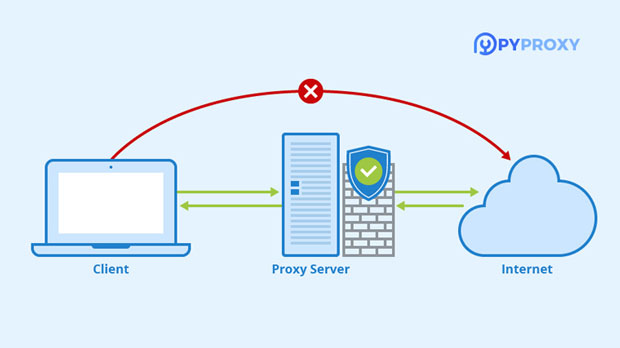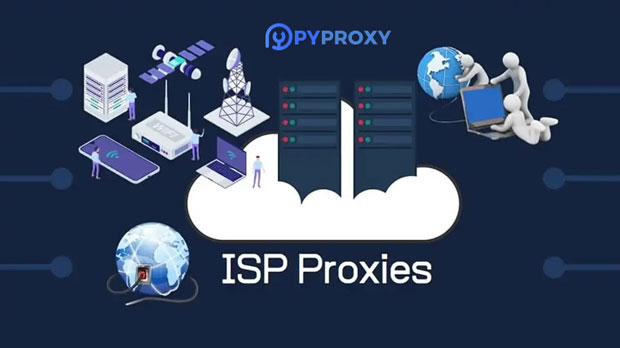Selecting a high-quality mobile proxy service provider is essential for businesses and individuals who need to access geo-restricted content, perform web scraping, or maintain anonymity while browsing. Mobile proxies allow users to mask their IP addresses with real mobile devices, offering the added advantage of avoiding IP bans and bypassing limitations set by websites. However, with so many providers in the market, it can be difficult to know what to look for. In this article, we will explore the key factors that will help you identify a reliable mobile proxy service provider, ensuring your investment in proxies is effective and worthwhile. Understanding Mobile ProxiesBefore diving into the selection process, it’s important to understand what mobile proxies are and how they differ from other types of proxies. Mobile proxies work by routing internet traffic through mobile devices, which gives users an IP address that resembles that of a real mobile user. These IP addresses are tied to mobile carriers, making it difficult for websites to detect and block them. This type of proxy is particularly useful for tasks that require high levels of anonymity or access to location-based content.Mobile proxies provide significant advantages over traditional data center proxies, as they are much harder to detect. Additionally, they offer more realistic behavior, as mobile IPs are often associated with a wide variety of real-world locations. This makes them ideal for use cases like social media management, market research, or scraping websites that might flag typical data center IPs.Factors to Consider When Choosing a Mobile Proxy Service ProviderWhen selecting a mobile proxy provider, there are several critical factors to consider. These factors will not only ensure that you get the best performance but will also safeguard the quality and reliability of the services provided. Let's delve into the most important criteria:1. IP Pool Size and QualityOne of the first aspects to evaluate is the size and quality of the provider’s IP pool. A larger IP pool is essential for scalability, as it ensures that you can access a wider variety of IPs for different locations and tasks. A diverse IP pool means less likelihood of encountering IP bans or CAPTCHA challenges. Additionally, the quality of the IPs in the pool matters. Real, residential IPs tied to actual mobile carriers are preferred because they are less likely to be flagged or blacklisted.When assessing the IP pool, also consider whether the IPs are static or rotating. Rotating IPs are ideal for tasks that require continuous browsing, such as web scraping or social media automation, as they minimize the risk of detection.2. Geographic CoverageAnother important factor is the geographic coverage offered by the mobile proxy service provider. If you need proxies from specific locations, such as the United States, European Union, or Asia, ensure that the provider has a significant presence in those regions. Some tasks, such as ad verification or localized content scraping, may require proxies to appear as if they are coming from specific countries or even cities.Having a broad geographic coverage allows for greater flexibility in accessing content from different parts of the world, which can be critical for businesses operating internationally or conducting research across multiple regions.3. Speed and PerformanceSpeed and performance are critical when selecting a mobile proxy provider, especially for tasks like web scraping or browsing high-traffic websites. If the proxy service provider does not deliver fast speeds or consistent performance, your tasks will suffer delays or disruptions. A reliable provider will offer fast response times, ensuring that you can complete your tasks efficiently without time lags.To assess speed and performance, check if the provider offers any form of speed test or trial period to allow you to evaluate the service before committing. Additionally, consider whether the provider can offer support in case of performance issues, ensuring that you can resolve any potential problems quickly.4. Anonymity and Security FeaturesPrivacy and security are two fundamental considerations when choosing any proxy service. Mobile proxies should offer strong encryption to ensure that your internet traffic is secure. Furthermore, the provider should not log your activity or store any sensitive data. Check for the provider’s privacy policy to ensure they adhere to stringent security standards and do not engage in data logging or unauthorized data sharing.The anonymity of the proxies themselves is equally important. High-quality mobile proxies should give you the ability to remain undetected while performing your tasks, preventing websites from identifying that you are using a proxy in the first place.5. Pricing StructureCost is always a consideration, especially when you need mobile proxies for extensive use. However, don’t simply opt for the cheapest option, as the quality of service may suffer. Instead, evaluate the provider’s pricing structure in relation to the value offered. High-quality proxies generally come at a premium price, but they should offer competitive pricing based on your specific usage.It’s also a good idea to look for flexible payment models, such as pay-as-you-go or subscription-based plans. This ensures that you are not locked into a contract that may not suit your needs, especially if your proxy requirements change over time.6. Customer Support and ServiceGood customer support is another essential element in choosing a mobile proxy service provider. When issues arise, you want to be able to reach support quickly and get resolutions in a timely manner. Look for providers that offer multiple support channels, such as email, live chat, or phone support.Additionally, read reviews or feedback from other customers to gauge the provider’s responsiveness and ability to resolve issues effectively. A reputable mobile proxy provider will offer robust customer support that can assist with technical troubleshooting, billing inquiries, and other concerns.7. Trial Period and Refund PolicyBefore committing to a long-term contract, it’s essential to verify the service quality through a trial period. A provider that offers a trial allows you to test their services without significant financial risk. During the trial, evaluate the proxies' performance, speed, geographic coverage, and overall reliability.Additionally, check for a clear refund policy in case the service does not meet your expectations. A provider with a transparent refund policy indicates confidence in their service and helps minimize the risk for customers.Choosing a high-quality mobile proxy service provider requires careful consideration of several factors, including IP pool size and quality, geographic coverage, speed, performance, security, pricing, and customer support. By evaluating these aspects, you can make a well-informed decision that meets your specific needs. Remember to always prioritize quality over cost to ensure that you get the best value for your investment. A reliable mobile proxy service provider will help you maintain privacy, perform efficient web scraping, and bypass geo-restrictions with ease.
Apr 07, 2025
![arrow]()




























































